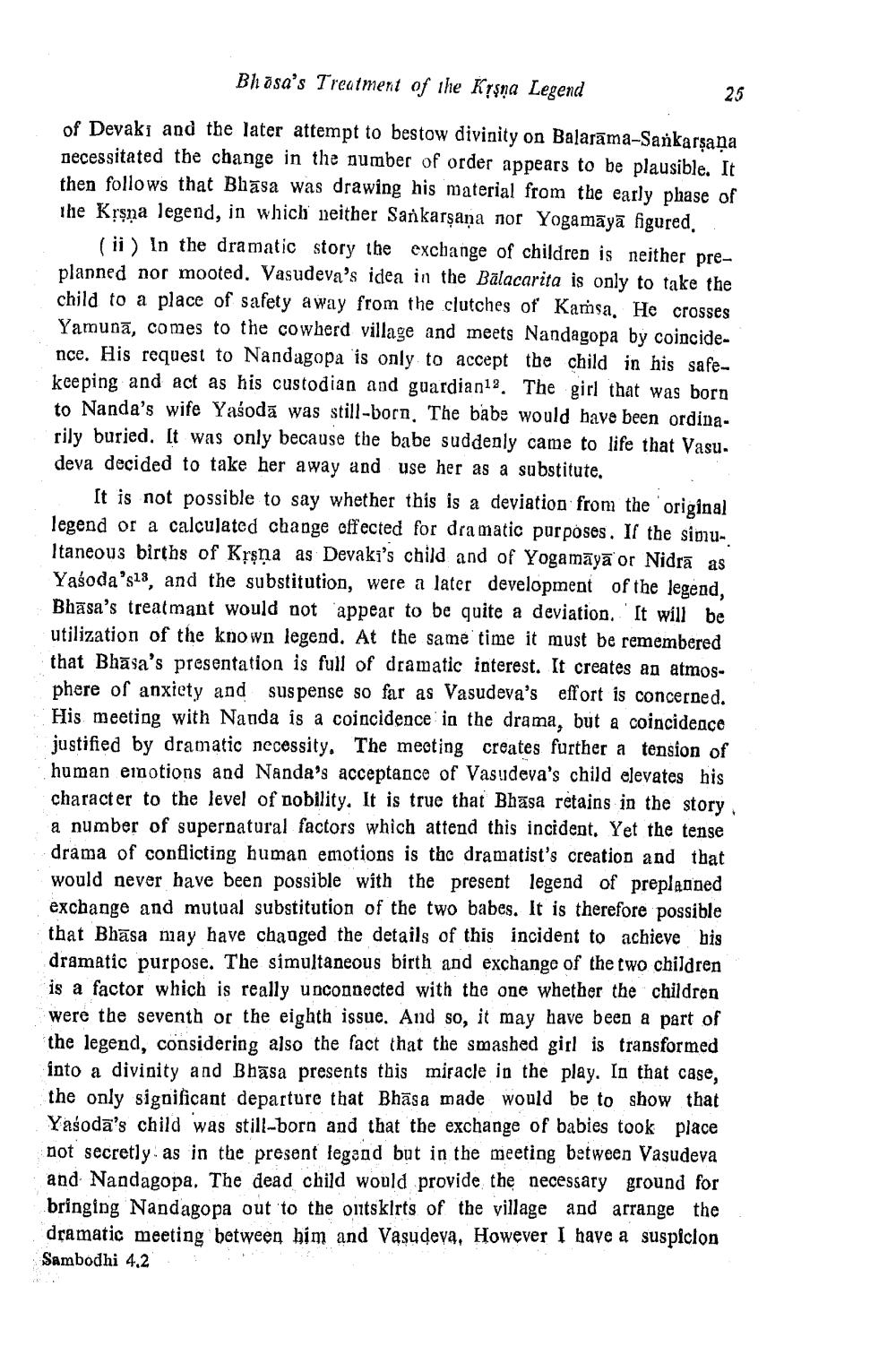________________
Bhosa's Treatment of the Kyşna Legend
25
of Devaks and the later attempt to bestow divinity on Balasāma-Sankarşaņa necessitated the change in the number of order appears to be plausible. It then follows that Bhāsa was drawing his material from the early phase of the Krsna legend, in which neither Sankarşaņa nor Yogamāyā figured.
(ii) In the dramatic story the exchange of children is neither preplanned nor mooted. Vasudeva's idea in the Balacarita is only to take the child to a place of safety away from the clutches of Kamsa. He crosses Yamuna, comes to the cowherd village and meets Nandagopa by coincidence. His request to Nandagopa is only to accept the child in his safekeeping and act as his custodian and guardian12. The girl that was born to Nanda's wife Yaśodā was still-born. The babe would have been ordinarily buried. It was only because the babe suddenly came to life that Vasu. deva decided to take her away and use her as a substitute.
It is not possible to say whether this is a deviation from the original legend or a calculated change effected for dramatic purposes. If the simuItaneous births of Krşņa as Devaki's child and of Yogamāyā or Nidra as Yasoda's13 and the substitution, were a later development of the legend, Bhasa's treatmant would not appear to be quite a deviation. It will be utilization of the known legend. At the same time it must be remembered that Bhasa's presentation is full of dramatic interest. It creates an atmosphere of anxiety and suspense so far as Vasudeva's effort is concerned. His meeting with Nanda is a coincidence in the drama, but a coincidence justified by dramatic necessity. The meeting creates further a tension of human emotions and Nanda's acceptance of Vasudeva's child elevates his character to the level of nobility. It is true that Bhāsa retains in the story a number of supernatural factors which attend this incident. Yet the tense drama of conflicting human emotions is the dramatist's creation and that would never have been possible with the present legend of preplanned exchange and mutual substitution of the two babes. It is therefore possible that Bhāsa may have changed the details of this incident to achieve bis dramatic purpose. The simultaneous birth and exchange of the two children is a factor which is really unconnected with the one whether the children were the seventh or the eighth issue. And so, it may have been a part of the legend, considering also the fact that the smashed girl is transformed into a divinity and Bhāsa presents this miracle in the play. In that case, the only significant departure that Bhāsa made would be to show that Yasoda's child was still-born and that the exchange of babies took place not secretly as in the present legand but in the meeting between Vasudeva and Nandagopa. The dead child would provide the necessary ground bringing Nandagopa out to the outskirts of the village and arrange the dramatic meeting between him and Vasudeva, However I have a suspicion Sambodhi 4.2




